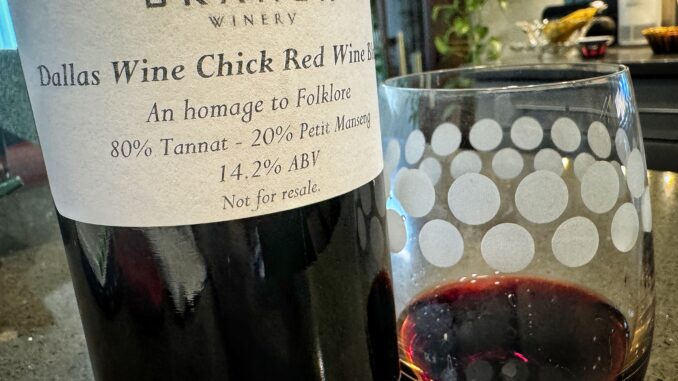
A fellow Texas Wine Blogger – Melanie Ofenloch (Dallas Wine Chick) recently explored Uruguayan Tannat on her blog. She attended a Tannat Masterclass webinar hosted by Peter Granoff MS and came away with an interesting find – Pujol Folklore Tinto2023 produced by Bodega Cerro Chapeu. The blend was produced from 80% Tannat co-pigmented with 20% Petit Manseng’s first-press skins.

After her Tannat story, Melanie visited with Dr. Robert Young, owner of Bending Branch Winery (Comfort, TX) – aka Dr. Bob at his winery that he often calls “The Tannat House of Texas”. At this visit, Dr. Bob present her with a special bottle of a Texas appellation Tannat – Petit Manseng blend he prepared. Since I recently gave my Specialist of Texas Wine courses at Bending Branch Winery, I too came away with a bottle of Dr. Bob’s special “Melanie’s Blend”. I will try to explain what captured my attention from Melanie’s blog and my tasting while also highlighting why red and white wine blends can at times be quite interesting.
Tannat – Petit Manseng Two Ways
In the jargon of winemaking there is a process called “co-pigmentation”. It occurs when white wine byproducts (often Viognier or just as well Petit Manseng) are added to red wine during fermentation. This addition can cause an interaction of anthocyanins in the fermenting wine to form complexes, resulting in darker and more stable colors in the red wine than would be the case if the red wine was just left up to its own devices in the fermentation tank.
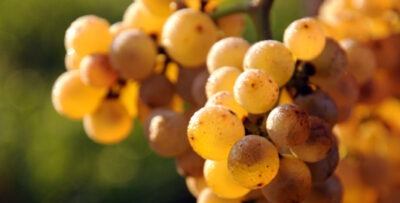
Secondly, wines made from the tannic Tannat red grape variety usually require substantial time aging in neutral oak to soften them, sometimes from 24 to 30+ months followed by substantial bottle aging, as well. A post-fermentation blend of the tannic Tannat with a naturally fruity and aromatic grape like Petit Manseng can soften Tannat and give it a floral lift on the nose. While most Texans have not yet experienced Petit Manseng, Dr. Bob has been an advocate for the grape and recently put out two vintages of varietal Texas Petit Manseng wine, a first for our state.

Dr. Bob – “The Supreme Experimenteur”
So, you might understand why Dr. Bob was so interested in Melanie’s blog and drawn to the interaction of Tannat and Petit Manseng. After all, he is a man who loves exploring the frontiers of fermentation science. He is already using techniques like cryo-maceration and flash détente (also called thermovinifation) to enhance extraction of flavors and aromas, and soften tannins in this red wines. He is also a winemaker that you might say is totally “immersed” in Tannat at his “Tannat House of Texas” and uses fermentation science to bring Texans the best Tannat and other red wines possible.
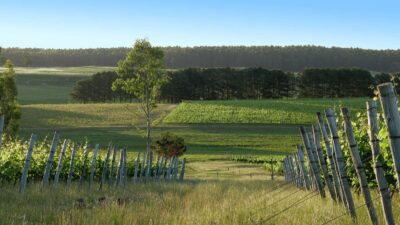
A European Meet-Up Created In Uruguay
Petit Manseng originated from Jurancon, in the French Pyrénées near the Atlantic coast. Interestingly, Madiran, in the French Pyrénées is the ancestral home of Tannat, just to the north-east. Both Tannat and Petit Manseng are now found in Uruguay, first brought by Basque settlers. Stateside, Petit Manseng is also found in Virginia, where its resistance to rot and tendency to achieve high sugars and retain acidity is valuable in the hot, often humid climate.
However, it is at Uruguay’s Bodega Cerro Chapeu where Tannat and Petit Manseng had their interesting meet-up. The result was a Tannat-Petit Manseng co-fermented blend with a floral lift on the nose, fresh red fruit notes on the palate and moderate acidity.
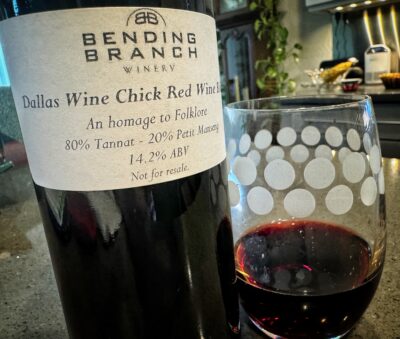
The Tasting in Houston
Dale Robertson (@sportywineguy) and I had a good time tasting Dr. Bob’s Tannat – Petit Manseng wine that we referred to as Melanie’s Blend. Most noticeable was that the blend was very approachable with a bit of that aforementioned “floral” note described on the nose that we did not observed in his usual Bending Branch Tannat offerings. Furthermore, the 20% Petit Manseng in the Tannat did not take away from perceived body of the wine or its weight on the palate. The usual red and dark fruit carried from the aroma through to the finish and well structured tannins, but with a gentle (soft) finish.
The Winemaker’s Response
Upon sending Dr. Bob our comments from the tasting, he responded with the following:
“Russ, this wine was made post-fermentation. The Tannat was 2021 and Petit Manseng 2023. Put together so you and Dale could get a taste of what this blend could do. I have done no co-pigmentation trials yet since this was only brought to my attention a few months ago. We have it on the upcoming harvest schedule and will do it in a few weeks. It is encouraging that you and Dale and all 4 tasters liked this combination. Thanks for all your feedback.”
Thus, the story continues…


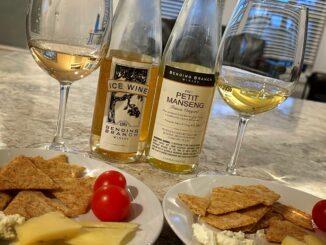
Be the first to comment